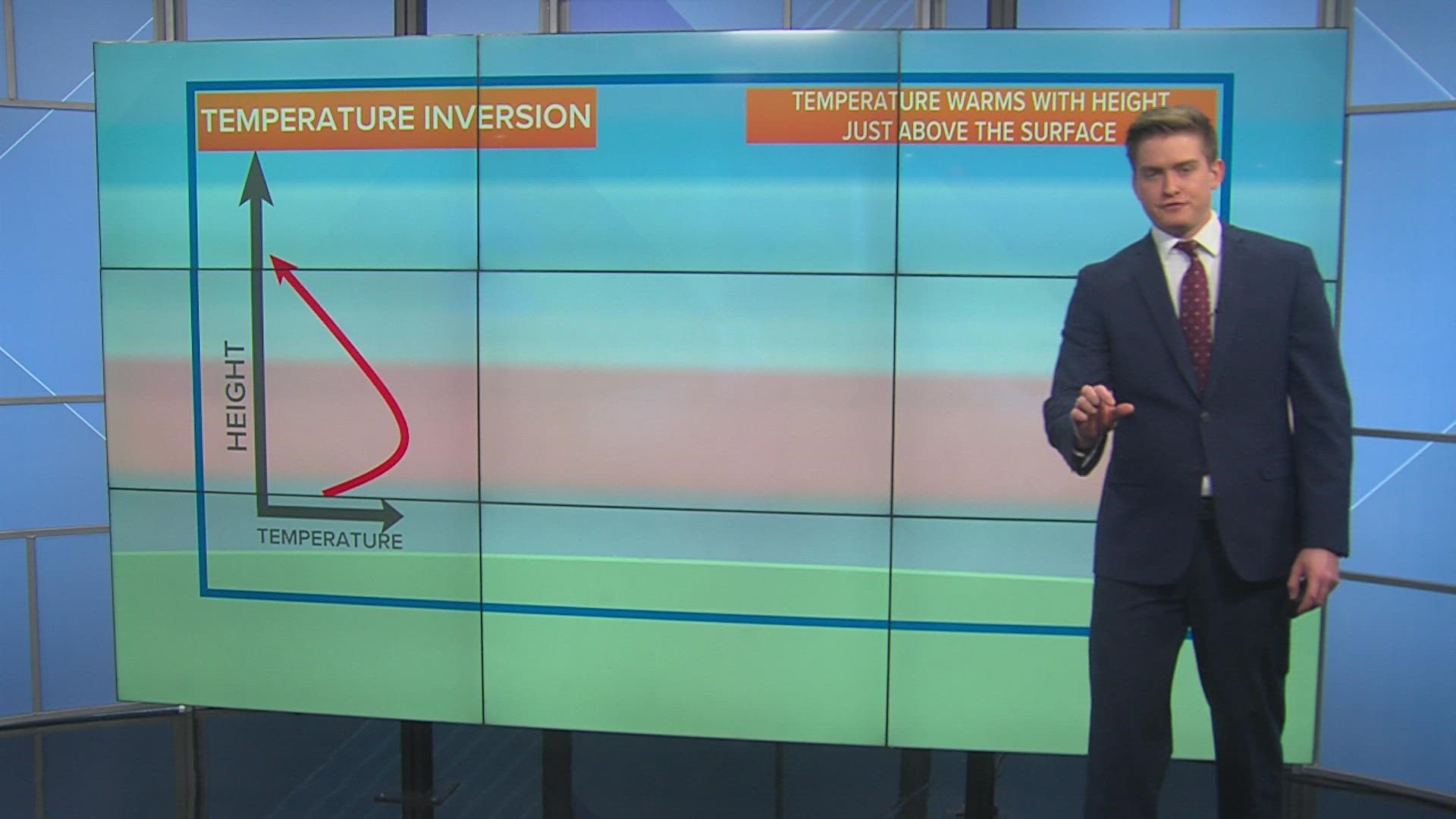DES MOINES, Iowa — Typically, the temperature in the troposphere (the lowest portion of our atmosphere where weather happens) decreases with increasing altitude. But occasionally, the opposite happens.
When the temperature increases with altitude, that is called a temperature inversion. Essentially, warmer air is held above cooler air. Using the trick that hot air rises, that seems to make sense. However, in our atmosphere, the ideal gas law says the opposite must happen.
Why?
Atmospheric pressure decreases as you gain altitude. This is why aircraft cabins must be pressurized to keep passengers and crew members safe.
Temperature inversions in the troposphere can lead to a variety of consequences. Since the cold air is trapped, that also leads to air pollution being trapped below the inversion. This can lead to little to no impacts, or major, life-threatening ones.
One of the most famous instances of this was The Great London Smog of 1952.
Or, instead of smog or air pollution being trapped, it can be fog. Some of the most dense fog and worst visibility conditions occur when an inversion is present. With light winds, high low-level moisture and an inversion, some sort of fog is nearly always a guarantee.
The last main impact of inversions is in regard to severe thunderstorms. You may have heard of the term "cap" in regard to a severe weather day. That's when there is an inversion, and vertical motion (thunderstorm development) cannot occur until air parcels can "overcome" the cap.
Sometimes, an arriving cold or warm front, or some sort of large-scale forcing can override the cap. When that happens, explosive thunderstorms (typically including tornadoes) can occur. Or, if the cap is not broken, a potentially big severe weather day can result in nothing happening.
This coming spring, keep an ear out to hear if we talk about a "cap" in regard to forecast a severe thunderstorm or tornadic day. Those days are a boom or bust type of event.
► Download the We Are Iowa app
► Sign up for Local 5's "5 Things to Know" email newsletter
► Subscribe to Local 5 News on YouTube
Watch more Local 5 Weather Lab segments on YouTube

